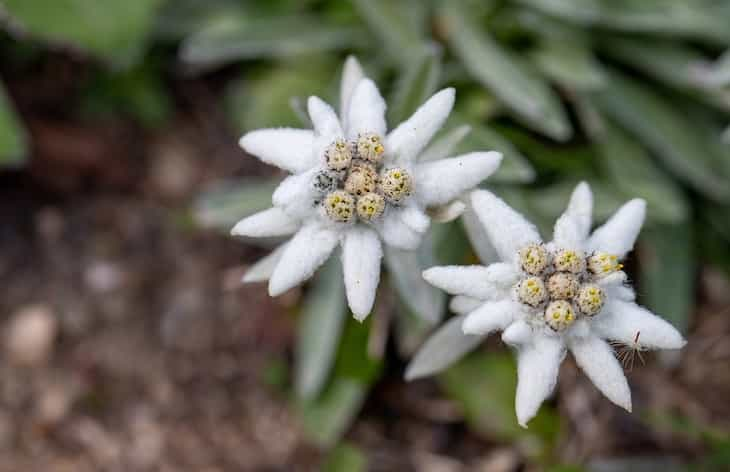If you want your garden to be more exotic and diverse, then you can grow some unusual and beautiful plants there.
For instance, edelweiss usually grows in mountain regions, but you still can grow it in your garden!
Here are a few tips on how to create perfect growing conditions for it.

Select the Right Location
Choose a planting site with well-draining soil.
Edelweiss prefers alkaline soils and is often found in rocky areas.
Ensure the location receives ample sunlight but is protected from intense afternoon heat.
Prepare the Soil
Edelweiss prefers lean, rocky soil. Enhance drainage by adding sand or gravel to the soil.
If your soil is acidic, consider adding lime to achieve the alkaline conditions edelweiss loves.
Planting Edelweiss Seeds
Edelweiss can be grown from seeds. Sow the seeds in early spring or late fall.
Press the seeds into the soil but avoid covering them completely.
Keep the soil consistently moist until germination.
Temperature Considerations
Edelweiss thrives in cool to cold climates.
While it can tolerate some warmth, it's crucial to provide adequate shade during hot summer afternoons to prevent stress on the plant.
Watering Practices
Edelweiss prefers moderate moisture.
Water the plants when the soil feels dry to the touch.
Avoid overwatering, as edelweiss doesn't tolerate waterlogged conditions.
Pruning and Deadheading
Regularly deadhead faded flowers to encourage continuous blooming.
Pruning can also help maintain a compact and tidy appearance.
Protection from Pests
Edelweiss is generally resistant to pests and diseases.
However, keep an eye out for aphids or spider mites.
If detected, treat them promptly with insecticidal soap or neem oil.
Winter Care
In colder climates, provide winter protection by covering the plants with a layer of straw or pine needles.
This helps insulate the roots and prevents frost damage.
Avoid Fertilizing Excessively
Edelweiss is adapted to nutrient-poor soils. Avoid excessive fertilization, as it can lead to leggy growth.
A light application of a balanced fertilizer in spring is generally sufficient.
Recently, we talked about greenhouses for flowers.











